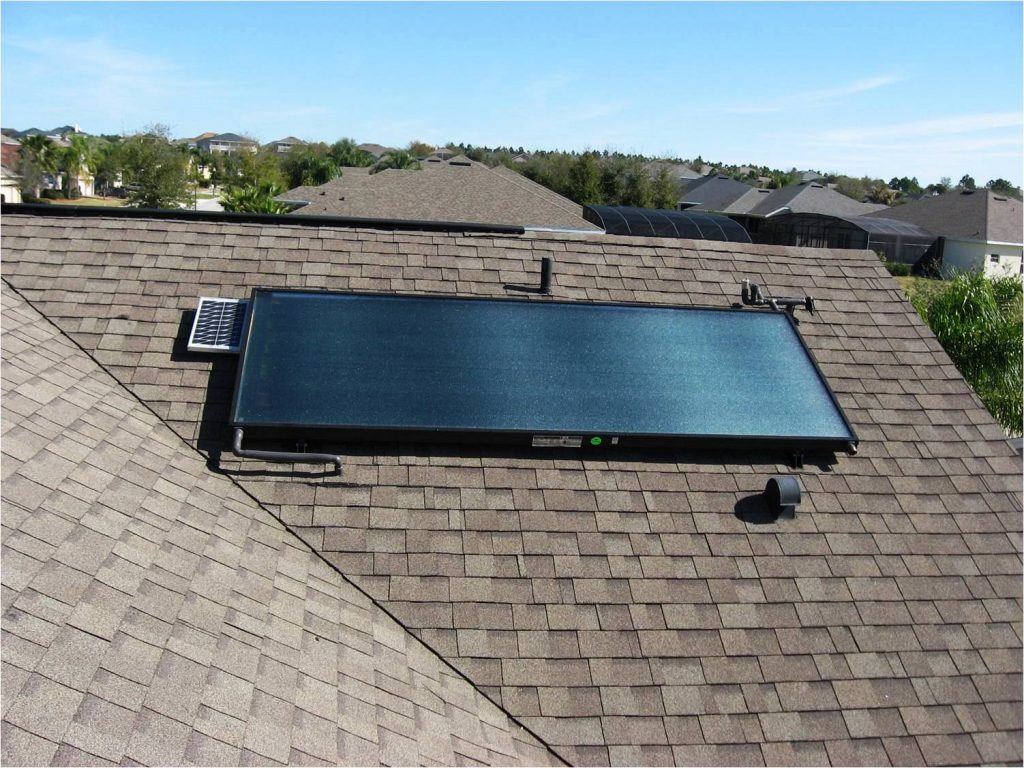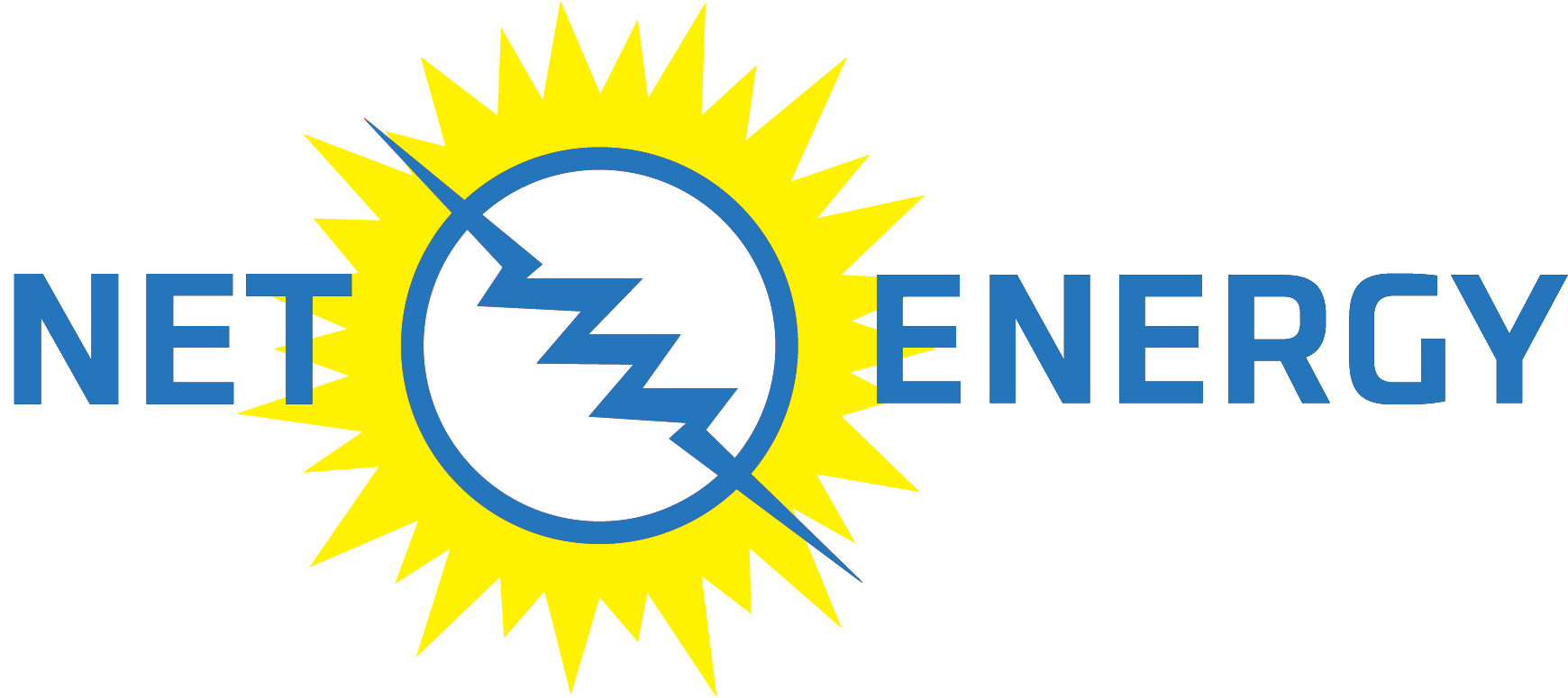
What is Solar Water Heating?
Solar water heating collectors capture and retain heat from the sun and transfer this heat to a liquid. Solar thermal heat is trapped using the “greenhouse effect,” in this case is the ability of a reflective surface to transmit short wave radiation and reflect long wave radiation. Heat and infrared radiation (IR) are produced when short wave radiation light hits a collector’s absorber, which is then trapped inside the collector. Fluid, usually water, in contact with the absorber collects the trapped heat to transfer it to storage.
Two principles govern solar thermal collectors. First, any hot object eventually looses its heat back to the environment. The efficiency of a solar thermal collector is directly related to heat loss, mainly from convection and radiation. Thermal insulation is used to slow down heat loss from a hot object to its environment.
Second, heat loss is more rapid if the temperature difference between a hot object and its environment is larger, in this case between the temperature of the collector surface and the ambient temperature. (But the same goes for transferring heat from the collector to the fluid, a larger difference between the collector and the liquid, the more heat is transferred.)
The most basic approach to solar heating of water is to simply put a tank filled with water into the sun. The heat from the sun would heat the metal tank and the water inside. This was how the very first SWH systems worked more than a century ago. However, this setup would be inefficient because there is little to limit the heat loss from the tank. Adding an insulated box around the tank, and adding glass above the top where the sun comes in would do a lot to retain heat.
A more common collector is called a flat plate collector. It has a large, flat surface area (absorber) to maximize exposure to the sun, and has small tubes bonded to it. Fluid runs through the tubes, collecting the heat from the absorber. The sides and bottom of the collector are well-insulated, and glass on top completes the insulation.
This is quite simple, but there are some very technical factors involved in making the collector as efficient as possible. One is the coating on the absorber, which is specially formulated to both absorb as much heat as possible, and to radiate back out as little heat as possible. Another is the glass, which is high-iron and specially coated to let as much light energy as possible through and to also prevent as much heat loss as possible.
Another popular type of collector is called evacuated tube, which has a long, skinny absorber that is inside a glass tube. The tube has the air evacuated out of it, which makes it highly insulated—not too different from a thermos used to keep drinks hot.
The final type of collector is a parabolic dish or tray, which increases heat potential by concentrating sunlight onto a small absorber. These are very rare in home water heating systems, and more commonly used in utility-scale systems to create steam which runs turbines to make electricity.
The basic components in home solar heating systems include:
- Collectors to take the heat from the sun and pass it to a fluid
- The heat transfer fluid which takes the heat from the collector for use or storage
- Heat exchangers to transfer the heat from the fluid to a home’s domestic water.
- Pumps to move the fluid through the collector and/or the exchanger, and sometimes to move the domestic water through the other side of the exchanger.
- Controllers to run the pumps when there is collector heat available.
Why Use Solar Water Heating?
Heating your water with solar energy can be a rewarding venture in more ways than one. In general, there are several reasons to use solar energy.
Energy Independence. Using solar can reduce your dependence upon the utility, as well as the fossil fuel companies that supply it. It helps reduce the nation’s reliance on foreign energy sources. Solar is as reliable as getting your energy from the utility, as well. As long as the sun is shining, you’ve got energy. Many folks with solar hot water only need to use the utility for backup, and sometimes not even that. Independence can be a very gratifying experience.
Environmental Impact. It is a fact that most of our energy comes from burning fossil fuels. This leads to a wide array of environmental problems, including human-caused climate change, acid rain, mountaintop removal for coal and tar sands, and health effects around power plants. The use of nuclear energy and its long-lived, poisonous byproducts is an important issue to many.
But why risk the environment, when we can take advantage of the sun which falls freely on Earth, ready to be used for our own energy needs? With the slight exception of having to manufacture the equipment needed to capture the sun’s heat, there is no environmental impact from making solar energy at our homes.
Financial Benefits. When you choose to use solar to replace all or part of what you had been using the utility for, that comes with financial savings on your utility bill. Solar-electric, as popular as it is, does not have as high an energy and cash savings per amount spent as does solar water heating. It is easy to see 50% to 100% savings on your bill, helping systems to recoup the original investment in 5 years, and as little as 3 years. The time depends largely on your local solar resource and how much utility energy costs.
As with other energy technologies, there are often financial incentives to make the initial investment even more attractive. For solar hot water they can include state and federal tax credits, and state, regional, and utility rebates.
Antifreeze systems are the most common type in climates that regularly freeze. It is has no drainback tank, so the fluid in the collector cannot drain out of the outdoor plumbing. The freeze protection comes from polypropylene glycol antifreeze, so it can stay in the collector after the controller shuts the pump off.
Pool heaters are the final system, and are not used for heating domestic water. Pool collectors are usually made up of many parallel poly pipes sitting on a roof near the pool. The pool water is circulated through the pipes using the pool’s circulation pump, which would be running anyway. The controller operates a valve to divert some of the pool pump’s water through the collector. When not operating, the collector water drains back into the pool.
How to Use Solar Water Heating
Using solar hot water is easily integrated into most people’s lifestyles. Once a system is installed and commissioned, it rarely takes any maintenance at all. The three main uses for SHW are:
Domestic hot water is perhaps the best known of solar water heating applications. Nearly every home uses hot water every day, with the typical U.S. household being around 30 gallons per person per day. This covers showers, dish washing, and clothes washing. Hot water is stored in a tank for when it is needed. An energy efficient household might use less than half of that amount.
Space heating is a lesser-used application for solar hot water. Similar to domestic solar hot water heating, except that non-potable hot water is pumped into either in-floor hydronic tubing, to heat registers or radiators on the walls or baseboards, or to a heat exchanger inside a forced-air heater.
Pool heating is a very easy use of solar water heating technology, and because its equipment is minimal and less expensive, is practically a no-brainer—if you have a heated pool.
Systems
There are several system types for turning solar energy into hot water, and each has its purpose or advantages and disadvantages:
Batch heaters are the most basic—a tank in the sun, though usually in an insulated box with a glass or plastic cover. These are plumbed inline with the domestic water system they serve, no pumps or controls are needed. They make great DIY projects that can be made from any old conventional hot water heater tank. But they do not do well in freezing temperatures—most people will route the water supply around them, and empty them in the winter.
Thermosyphon is the next simplest system. These entirely passive (meaning no pumps) systems rely on the collector being below the tank, so that natural convection moves the hot water out of the collector and to the tank for household use. These systems are also inappropriate for freezing climes.
Direct forced-circulation is similar to the thermosyphon system, but adds a pump and controller. The pump makes it possible to pick up more heat out of the collector. The controller measures when the collector is hotter than the tank and turns the pump on or off as appropriate. These systems also have no freeze protection.
Drainback systems add a tank and a heat exchanger. The drainback tank is sized so that all the water in the collector and lines can drain down into it, when the pump turns off. That way there is no water left in the collector at times when it could otherwise freeze. The water in the system is separate from the household water, so it needs a heat exchanger to transfer the heat from the collector water to the domestic water.
Call Our Office Now: (954) 999-9309

